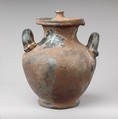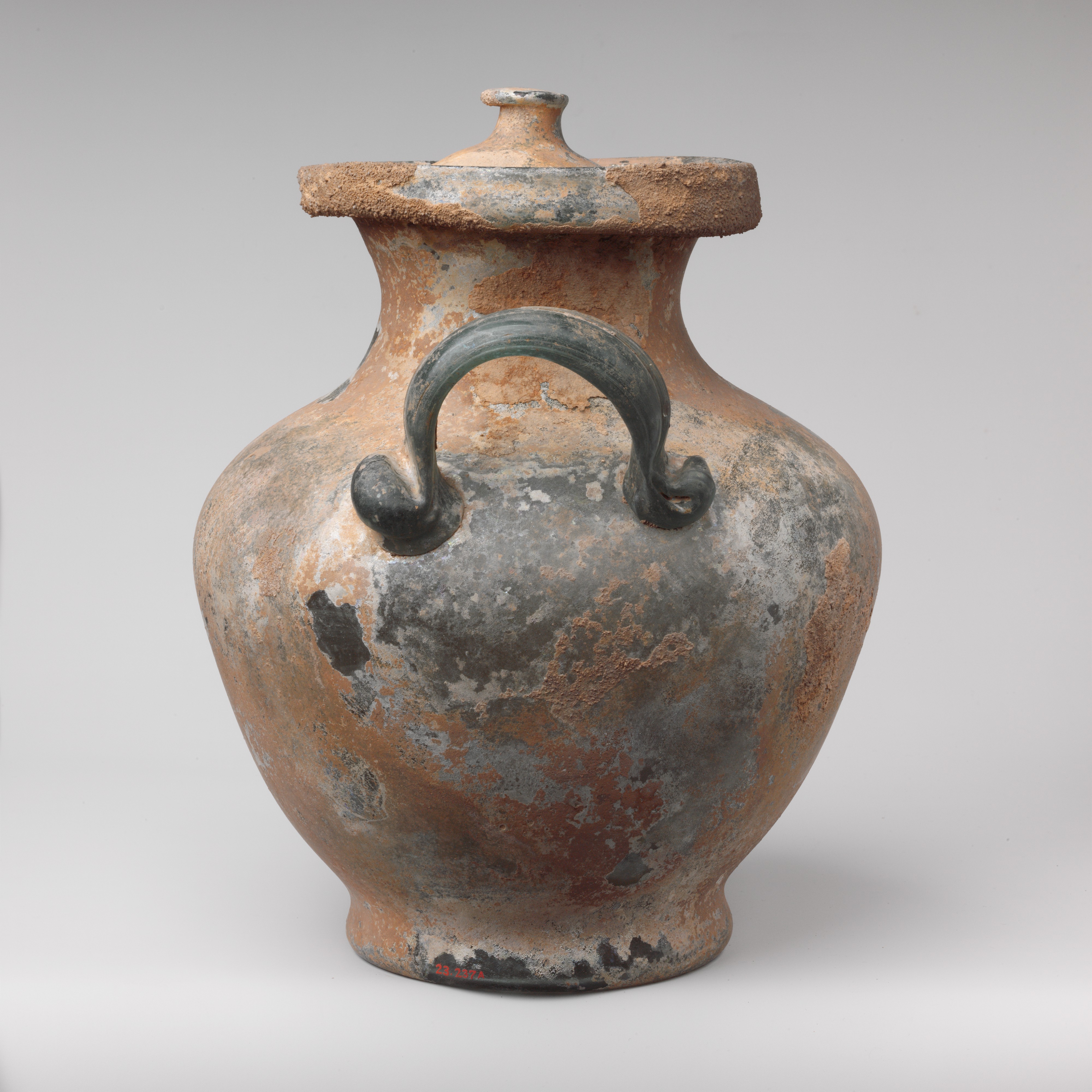Glass cinerary urn with lid
Urn: Translucent blue green; handles in same color.
Collar rim, folded out, down, round, up, and in, and smoothed into side of mouth; funnel-shaped neck; sloping shoulder; piriform body; splayed hollow foot; deep concave bottom; two vertical, arched, inverted U-shaped handles, attached on opposite sides of upper body, each made of a thick trail, applied as a large circular pad, drawn across body from left to right, and trailed off back along top of handle.
Intact; few bubbles; slight dulling, limy encrustation, and iridescent weathering.
Lid: Translucent blue green.
Horizontal, rounded rim; outer side flat, then cone-shaped, extending into short, hollow cylindrical stem; circular knob at top with downturned projecting flange and irregular hole at center.
Intact; a few pinprick bubbles; slight dulling, limy encrustation, and iridescent weathering.
The lid fits snugly in the mouth of the urn and has the same weathering, suggesting that they belong together.
The majority of glass cinerary urns come from Roman cemeteries in Italy or the northwest provinces, where cremation was the preferred form of burial in the Early Imperial period. This example, however, was reportedly found in a tomb in North Africa.
#1210. Glass cinerary urn with lid, Part 1
-
1210. Glass cinerary urn with lid, Part 1
-
1210. Glass cinerary urn with lid, Part 2
Playlist
Due to rights restrictions, this image cannot be enlarged, viewed at full screen, or downloaded.
This artwork is meant to be viewed from right to left. Scroll left to view more.



